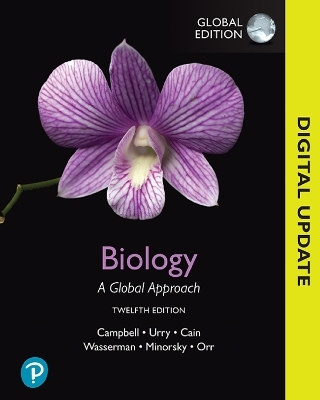
Advanced Technologies for Rechargeable Batteries
CRC Press
978-1-032-38181-7 (ISBN)
- Titel z.Zt. nicht lieferbar
- Versandkostenfrei
- Auch auf Rechnung
- Artikel merken
The main aim of this volume series is to deliver the significance of latest rechargeable batteries over the currently using lithium–ion batteries. It focusses on the next-generation rechargeable batteries such as magnesium ion batteries, metal air batteries, sodium ion batteries, chloride ion batteries, fluoride ion batteries, redox flow batteries, hybrid batteries, iron-ion batteries etc. It highlights emerging energy electrochemical systems and the recent progress in energy storage devices.
Features:
• Covers recent battery technologies in detail, from chemistry to advances in the post lithium-ion batteries.
• Introduces detailed information about the next-generation high power rechargeable battery and scrutinize the major challenges faced by lithium ion batteries.
• Gives detailed explanation of the working mechanism of such batteries.
• Includes section on ion batteries exploring new type of metal ion batteries.
• Provides authoritative coverage of scientific contents via global contributing experts.
This book is aimed at graduate students, researchers and professionals in materials science, chemical and electrical engineering, and electrochemistry.
Prasanth Raghavan is a Professor, at Materials Science and NanoEngineering Lab (MSNE-Lab), Department of Polymer Science and Rubber Technology, Cochin University of Science and Technology (CUSAT), Visiting Professor at Biorefining and Advanced Materials Research Center, SRUC (Scotland’s Rural College), Edinburgh EH9 3JG, UK and at Department of Materials Engineering and Convergence Technology, Gyeongsang National University, Republic of Korea. Akhila Das is a graduate student pursuing Ph.D. at Materials Science and NanoEngineering Lab (MSNE-Lab), Department of Polymer Science and Rubber Technology (PSRT), Cochin University of Science and Technology (CUSAT), India. Jabeen Fatima M. J has recently joined Carborundum Universal Limited as Manager of Technology. She was previously engaged as a research scientist at Materials Science and NanoEngineering Lab (MSNE-Lab), Department of Polymer Science and Rubber Technology (PSRT), Cochin University of Science and Technology (CUSAT), India. Before joining MSNE Lab, she was working as a tentative Assistant Professor at Department of NanoScience and Technology, University of Calicut, India.
Advanced Technologies for Rechargeable Batteries: Alkaline Metal Ion, Redox Flow, and Metal Sulfur Batteries
Chapter 1. Current Rechargeable Batteries: Issues and Challenges. Chapter 2. Ion batteries- An overview. Chapter 3. Magnesium ion batteries - An Overview. Chapter 4. Potential Anode Materials for Magnesium Ion Batteries. Chapter 5. Cathode Materials for Rechargeable Magnesium Ion Batteries. Chapter 6. Electrolytes for storage Magnesium ion batteries: An overview. Chapter 7. Polymer electrolytes and separators for magnesium ion batteries. Chapter 8. Electrochemical Mechanisms in Sodium-Ion Batteries. Chapter 9. Cathodes for Sodium-ion Batteries. Chapter 10. Anode materials for sodium-ion battery. Chapter 11. Electrolytes for Sodium ion batteries. Chapter 12. Redox Flow Battery: an overview. Chapter 13. Vanadium Redox Flow Batteries: Electrode Materials. Chapter 14. Electrolytes for Vanadium Redox Flow Batteries. Chapter 15. Aqueous Acidic Redox Flow Batteries. Chapter 16. Lithium Redox Flow Battery. Chapter 17. Sulfurized Polyacrylonitrile Cathodes for Advanced Lithium-Sulfur Batteries. Chapter 18. An Overview of Magnesium Sulfur Battery: Next Generation Energy Storage Device. Chapter 19. Metal Sulfur Battery; A promising candidate for next generation battery. Chapter 20. Electrolyte for Metal Sulfur Batteries
Advanced Technologies for Rechargeable Batteries: Metal-Ion, Hybrid, and Metal-Air Batteries
Chapter 1. Chloride Ion Batteries. Chapter 2. Potassium-ion batteries: Recent Trends and Challenges. Chapter 3. Zinc-ion Batteries: Materials to Mechanism of Energy Storage. Chapter 4. Recent Advances and Trends in Al-ion Batteries. Chapter 5. Characterization of Electrochemical Behaviour of All Iron-Ion Batteries for Grid Scale Applications. Chapter 6. Calcium Ion Batteries. Chapter 7. Nuclear Batteries: An Overview. Chapter 8. Magnesium – Lithium Hybrid Batteries. Chapter 9. Metal-air Batteries: Future of Hybrid or Electric Vehicles (HEV or EV). Chapter 10. Lithium-Air Batteries: Batteries for Emerging Electric or Hybrid Electric Vehicles (EV or HEV), a focus into general aspects and electrolyte engineering. Chapter 11. Lithium-air batteries: State of the art developments in anode, cathode and electrocatalyst. Chapter 12. Emerging Magnesium-Air Battery Technology: Electrolyte and Anodic Materials. Chapter 13. Emerging Magnesium-Air Battery Technology: Cathodic Materials. Chapter 14. Advancements in Sodium-Air Batteries: General Electrochemical Mechanisms and Advances. Chapter 15. Emerging Sodium-Air Batteries: State of the art in Anode stabilization. Chapter 16. Advancements in Air cathodes in Sodium-Air Batteries: Cathode Materials. Chapter 17. State of the art in electrolyte engineering and separator modifications for Sodium-Air Batteries. Chapter 18. Rechargeable Zn-air Battery: Current challenges and opportunities. Chapter 19. Emerging Cost-efficient Aluminium-Air Battery Technology-Anode Materials. Chapter 20. Emerging Cost-efficient Aluminium-Air Battery Technology: Cathode Materials. Chapter 21. Emerging Cost-efficient Aluminium-Air Battery Technology: Electrolyte Materials
| Erscheint lt. Verlag | 20.8.2024 |
|---|---|
| Zusatzinfo | 37 Tables, black and white; 282 Line drawings, black and white; 115 Halftones, black and white; 397 Illustrations, black and white |
| Verlagsort | London |
| Sprache | englisch |
| Maße | 178 x 254 mm |
| Gewicht | 1670 g |
| Themenwelt | Naturwissenschaften ► Biologie |
| Technik ► Elektrotechnik / Energietechnik | |
| Technik ► Maschinenbau | |
| Technik ► Umwelttechnik / Biotechnologie | |
| ISBN-10 | 1-032-38181-7 / 1032381817 |
| ISBN-13 | 978-1-032-38181-7 / 9781032381817 |
| Zustand | Neuware |
| Haben Sie eine Frage zum Produkt? |
aus dem Bereich


